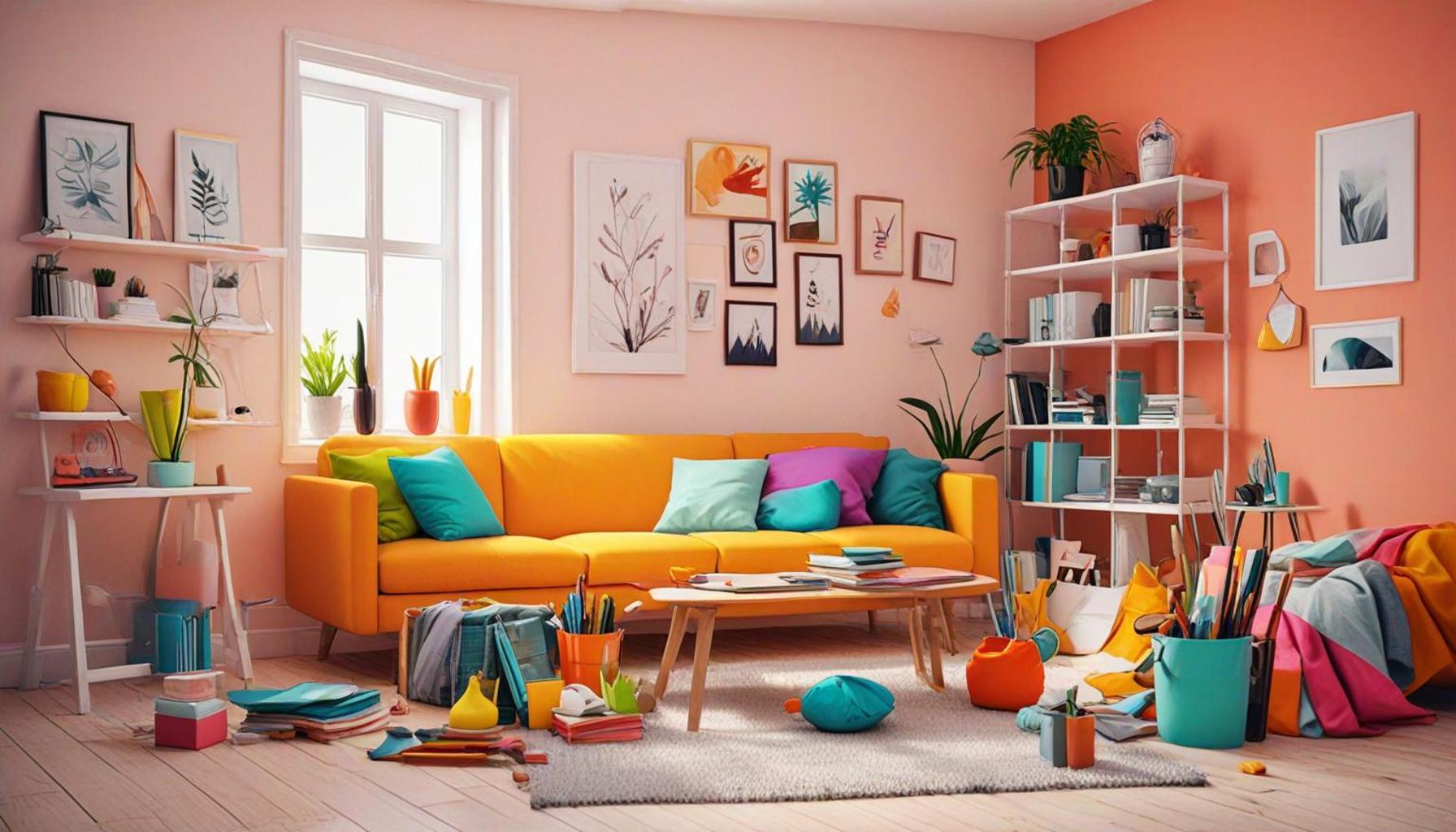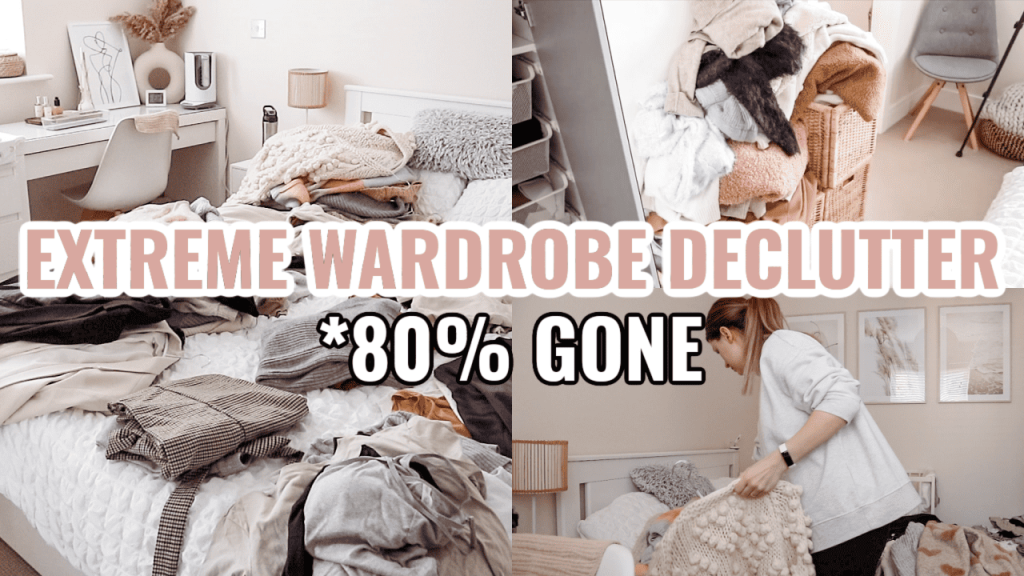Effective Strategies to Declutter A Beginners Guide to Minimalism

Introduction
Decluttering your home is not just about clearing out physical space; it’s about creating a sanctuary that reflects clarity and peace in your life. As minimalism gains popularity, many individuals seek ways to simplify their lives by embracing a more intentional approach to belongings. This journey into minimalism can enhance your well-being, reduce stress, and improve personal organization.
For those just starting, understanding the fundamental strategies to reduce clutter can be overwhelming. That’s why we’ve compiled a list of Top 5 effective strategies that will guide you in transforming your living space from chaotic to calming. Each method builds on the core principles of minimalism, helping you prioritize what truly matters in your life.
- Identify your primary goals in organizing.
- Set aside dedicated time for decluttering.
- Utilize the “one in, one out” rule for new acquisitions.
- Make use of storage solutions to optimize space.
- Regularly reassess your environment for continual improvement.
In the following sections, we will explore these strategies in detail, providing actionable steps to help beginners embark on their minimalist journey. By embracing these practices, you can enjoy a harmonized home that reflects not just what you own, but who you are.
DISCOVER MORE: Click here for practical tips to organize your digital files and photos
Top 5 Effective Strategies to Reduce Clutter at Home: A Practical Guide for Minimalism Beginners
In a rapidly evolving world that often equates success with the accumulation of goods and material wealth, choosing to walk the path of minimalism can seem like a radical shift. However, embracing minimalism offers a rewarding and transformative experience that promotes peace and clarity in your living space. If you’re contemplating starting this journey, the first step is to reduce clutter at home. This guide outlines the top five effective strategies to help you transition smoothly into a minimalist lifestyle, ensuring that your home becomes a sanctuary of calm amid the chaos of modern life.

5. Create a Decluttering Schedule
Embarking on a mission to declutter your home might feel daunting, much like setting any significant goal, but with a structured approach through a decluttering schedule, the task becomes manageable and less overwhelming. By breaking down the process into smaller, consistently scheduled tasks, you can achieve noticeable progress without feeling inundated.
- Set specific days: Allocate certain days of the week to specific areas of your house. This could mean tackling the kitchen on Monday, focusing on the living room on Wednesday, and dealing with the bedroom on Saturday.
- Begin with high-traffic zones: Start with spaces that naturally accumulate clutter, such as kitchens and living rooms, before moving on to less-used areas like guest rooms or study spaces. High-traffic zones give instant noticeable impacts, motivating you to continue.
- Time your sessions: To prevent burnout, designate shorter, more frequent sessions than attempting to declutter for hours in one go. Even 15-30 minutes per session can yield significant results over time.
This scheduled approach turns decluttering from a herculean task into part of your regular routine, fostering a sense of order and accomplishment with each completed session. It becomes a practice, not unlike working out or maintaining a diet, where consistency is quintessential.
4. Employ the One-In-One-Out Rule
Adopting the one-in-one-out rule is a straightforward yet profoundly impactful strategy for ensuring that clutter does not creep back into your life once you’ve cleared it. This rule stipulates that for every new item you introduce into your home, you remove an older one, thus maintaining a balance in your belongings.
- Evaluate necessity: Before making a purchase, ask yourself whether it’s a necessity or a momentary desire. This reflection encourages mindful consumerism.
- Immediate action: As soon as a new item is added to your home—be it a piece of clothing or a kitchen gadget—find an old item to donate or discard to maintain equilibrium.
This practice ingrains a sense of accountability and can significantly reduce impulsive buying behavior, promoting thoughtful consumption and a simpler lifestyle. Moreover, it fosters a deeper appreciation for what you already possess, as each item is chosen with intent.
3. Declutter by Category, Not Location
Instead of handling each room individually, a more strategic approach is to declutter by category, spanning across your entire home. This technique, popularized by decluttering pioneer Marie Kondo, allows you to fully grasp the extent of each category’s accumulation, providing insights into consumption patterns and helping you make more informed decisions.
- Start with clothing, often the most cluttered and impactful category.
- Move on to books, narrowing your collection to those that spark true joy or knowledge.
- Address documents, which can be digitized to save space and reduce paper clutter.
- Tackle miscellaneous items, from beauty products to kitchen utensils.
- Finally, confront sentimental items, focusing on mementos that genuinely evoke happy memories.
Ask yourself with each item, “Does this bring me joy?” or “Is this serving a purpose?” Through such introspection, you’ll find yourself surrounded by items that truly matter, leading to a more serene and personal living environment.
2. Utilize Storage Solutions Wisely
Effective storage solutions are critical in maintaining a clutter-free space but beware of using them as mere hiding spots for items you no longer need or love. Embrace the philosophy of less is more by finding creative ways to optimize the space you currently have, rather than purchasing additional storage furniture that may contribute to clutter rather than alleviate it.
- Multipurpose furniture: Choose furniture that serves multiple functions, such as a bed with drawers underneath or an ottoman that doubles as a storage bin.
- Clear containers: Opt for transparent storage solutions. Being able to see contents at a glance helps keep track of what you own without rummaging, making organization more sustainable.
- Labeling: Clearly label bins and boxes, contributing to a streamlined aesthetic and ensuring all household members are aware of the item placements.
By leveraging these smart storage tactics, you can achieve a less congested and more efficiently organized space, allowing your home’s true potential to shine through.
1. Embrace the Minimalist Mindset
The cornerstone of a successful transition to a decluttered life is adopting a minimalist mindset. This profound shift transcends the mere reduction of physical items and touches on the mental and emotional aspects of your life, enriching your experiences and interactions.
- Value experiences: Place greater importance on experiences and relationships rather than material possessions, finding joy and fulfillment in moments over things.
- Align with core values: Identify and resonate with your personal principles and let these guide your decisions around possessions, ensuring alignment with your life’s purpose.
- Practice gratitude: Cultivating a sense of gratitude for what you already have reduces the impetus to acquire more, nurturing contentment in simplicity.
This mindset promotes a sustainable approach to life, reducing the impact of consumerism. It nurtures a peaceful atmosphere within your home and by extension, within your life, affording simplicity and tranquility in equal measure.
These five strategies serve as your roadmap towards minimalist living, making your journey seamless and meaningful. Implementing these techniques will not only rid your home of unnecessary clutter but will also cultivate a profound appreciation for the simplicity and serenity that minimalism brings. As you embark on this transformative pathway, you’ll discover that each small step you take reaps significant rewards for your mental clarity and overall well-being. Happy decluttering!
| Category | Description |
|---|---|
| Clutter Management | Understanding how to identify and categorize items in your space is pivotal. Implement systems like a ‘one in, one out’ rule to maintain equilibrium. |
| Mindset Shift | Adopting a minimalistic mindset fosters intentionality in your decisions regarding possessions. This psychological approach encourages individuals to prioritize needs over wants. |
| Space Optimization | Utilizing versatile furniture and smart storage solutions can significantly enhance your living area. This approach not only reduces clutter but also improves functionality. |
| Regular Maintenance | Establishing a routine for reviewing items regularly helps to keep your space organized. A few minutes each week can spearhead long-lasting order. |
These strategies do not just aim to declutter physical spaces; they also engage the mind and soul, illustrating the essence of minimalism that extends beyond mere aesthetics. By grasping the methodologies within these categories, anyone can embark on a transformative journey toward a more serene and organized home. Each aspect, from identifying clutter to maintaining organization, complements the others, creating a holistic framework for anyone interested in simplifying their lives.
DIVE DEEPER: Click here for practical wardrobe tips
Frequently Asked Questions About Reducing Clutter at Home
What is the first step for someone new to minimalism?
The journey towards minimalism often begins with a significant mindset shift. First, it’s essential to identify and prioritize what truly matters in your life. Begin by evaluating your possessions. Ask yourself if each item adds value or serves a purpose. Tackling one room or category at a time can make the process less overwhelming and more manageable, providing a sense of accomplishment as you progress.
How can minimalism influence overall well-being?
Minimalism is not just about owning fewer things; it can significantly impact mental and emotional health. Reducing clutter can lead to a less stressful living environment, promoting clarity and peace of mind. Many minimalists report feeling less anxious and more focused. By simplifying your surroundings, you may also find that you have more time and energy for activities and relationships that bring you joy.
Are there any recommended strategies for maintaining a clutter-free home?
Yes, maintaining a clutter-free home requires consistency and mindfulness. Consider establishing regular routines, such as a daily 10-minute tidy-up to keep clutter at bay. Adopting the “one in, one out” rule can also be effective. This means for every new item brought into the home, one should be removed. Designing spaces with intentionality — ensuring everything has a place — can help maintain order.
Can minimalism be adapted for families with kids?
Absolutely! While it may seem challenging, many families successfully adopt minimalist principles. Encourage children to participate by teaching them to appreciate experiences over possessions. Involve them in decluttering activities by asking them to choose toys to donate. Consider implementing storage solutions that are accessible to children, promoting organization and responsibility. Minimalism can foster a family culture focused on activities and quality time rather than accumulating things.
Is minimalism solely about reducing physical possessions?
While reducing physical clutter is a significant component, minimalism also extends to digital spaces, time management, and overall lifestyle choices. A comprehensive approach might involve examining your digital footprint, such as decluttering your inbox or streamlining social media use. Additionally, adopting minimalism can help in aligning your time and energy with personal values, allowing you to focus on what genuinely enriches your life. It is a holistic lifestyle choice rather than merely a method for organizing belongings.
DISCOVER MORE: Click here to find out what to let go
Conclusion
In our exploration of effective strategies to reduce clutter at home, we’ve delved into the core principles of minimalism, a philosophy that’s gaining traction for its simplicity and impactful results. Adopting a minimalist approach doesn’t merely transform one’s living space; it also revolutionizes personal organization and well-being.
Main Takeaways
- Decluttering with Purpose: Emphasizing the importance of intentional decluttering, we highlighted the need to assess what truly adds value to our lives.
- Organizing Efficiently: A systematic approach to organization not only improves functionality but also enhances the aesthetics of your space.
- Mindful Consumption: By being more selective with purchases, we prevent future clutter and align our belongings with our values.
- Daily Tidying Habits: The adoption of simple habits, like dedicating a few minutes each day to tidying up, minimizes the prospects of chaos building up.
- Embracing Emotional Detachment: Understanding and overcoming emotional attachments to possessions can be empowering in the journey toward minimalism.
The significance of reducing clutter and embracing minimalism extends beyond just having a tidy home; it fosters mental clarity and focus. By creating a space that reflects simplicity and order, we pave the way for a more serene lifestyle. Echoing the words of prominent minimalist thinkers, living with less can often mean living with more purpose and clarity.
This guide offers a starting point for beginners to explore minimalism’s transformative potential. As the journey unfolds, it’s insightful to remember that minimalism is personal, and what works for one may not fit another. Explore further, experiment, and tailor the strategies to suit your unique lifestyle needs. In doing so, you might discover that a minimalist approach is not just about reducing clutter but enriching life in more profound ways.


